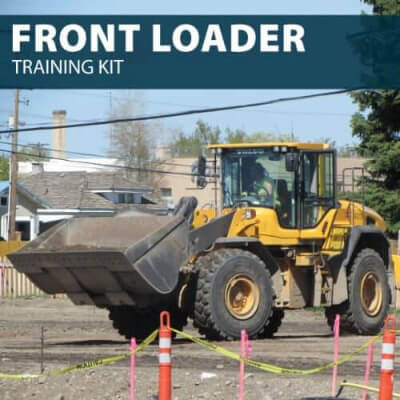
In order to provide this protection, the operator must be inside the cage, using his seat belt. The cage, (the Roll Over Protective Structure) is designed to protect the operator in the event of a rollover. The usual result is, the passenger is run over. The bouncing and jarring can cause passengers to be thrown off. Permit No Riders: No one, other than the operator, should ride the equipment. If someone ventures into the danger zone around where you are working, sounding a warning blast and stopping would certainly be in order. Backup alarms soon become part of the din on a jobsite. Never throw the engine into reverse without looking behind you. You must still be aware of your surroundings, use properly adjusted rearview mirrors and, when lighting is poor, use both front and rear lights. Just because you have a backup alarm on your loader, it is not safe to travel in reverse without concern–for any distance. There are other hazards to be considered as well: (1) getting caught in the pinch points of the bucket arms or the pivot area of an articulated machine, (2) collision, (3) running over a pedestrian, (4) spilling a load on others, (5) machine upset, (6) falling over an edge, (7) a rider falling off, (8) the operator falling when mounting or dismounting the equipment, (9) mechanical failure and, (10) a raised bucket falling.īack Up Cautiously: Accidents occur most frequently when backing.

Hopefully, you have recognized this as dangerous and have learned to slow down, especially when traveling downgrade, when empty, or when traveling on a particularly bad terrain. If you operate a front-end loader, you have probably experienced the bouncing, weaving, and “road walk” that leaves you feeling as if you are not in total control of the equipment.

In Safety Manual, Safety Topics, Tailgate Safety, Tailgate Safety Meetings, Toolbox Talks


 0 kommentar(er)
0 kommentar(er)
